This gorgeous porcelain peacock by Nymphenburg is one of the latest acquisitions at WMODA. In the late 19th century, the peacock became an icon of the Aesthetic movement, which emphasized the importance of art above everything else in daily life. “Art for art’s sake” was the credo of the aesthetes and their goal was to produce and experience works of great beauty. The beautiful peacock was their muse and continued as a favored motif into the Art Nouveau era.
The majestic Nymphenburg peacock at WMODA was modeled by Theodor Karner in 1906 when he was just 21 years old. It was one of his first works for this Munich porcelain manufactory where he established his reputation as a brilliant animal sculptor. Karner went on to work for the Rosenthal and the Allach factories where he became art director. The Nymphenburg peacock seems to strut out of Paradise with its marvelous train of feathers and glorifies a dazzling tradition of the peacock in art.
The spectacular Peacock Room by James McNeill Whistler, a treasure of the Freer Gallery in Washington, is the epitome of the Aesthetic interior of the 1870s. Whistler painted the room in shimmering shades of blue and gold as a setting for his painting The Princess from the Land of Porcelain. The room was created for a display of blue and white Chinese porcelain, which was much collected at the time. The murals became famous because of the row between the artist and his parsimonious patron who are depicted as fighting peacocks on one of the panels entitled "Art and Money; or the Story of the Room."
The iridescent feathers of the peacock, previously thought to bring bad luck, vied with sunflowers and lilies as the most popular adornment of the “House Beautiful” during the Aesthetic period. The notorious Oscar Wilde decorated his rooms with peacock feathers, blue and white china, and other objets d’art. He famously quipped, “I find it harder and harder every day to live up to my blue china.” Aesthetes like Wilde were ridiculed in satirical cartoons and popular literature. In the ballad of the Decorative Sisters from 1881, the intense young ladies “would start with joy ecstatic to behold a peacock feather.” Obviously, they did not believe the superstition that bringing peacock feathers into the house destines an unmarried woman to become an old maid.
In their pursuit of beauty, artists and designers of the late 19th century became intoxicated by the colors and splendor of the peacock. Aubrey Beardsley emphasized the decadent aspect of the bird’s beauty in his illustrations for Oscar Wilde’s play Salome. Arts & Crafts furniture was inlaid with exotic peacock designs, such as the Shapland & Petter cabinets at WMODA. William Morris designed curtain material featuring peacocks and dragons and Liberty’s, the famous London department store, produced a peacock feather furnishing fabric. Tiffany’s Favrile blown glass recreated the iridescence of the peacock’s plumage and his opalescent leaded glass windows and lamp shades incorporated peacock motifs in rainbow hues. René Lalique sculpted the head of a peacock in glass as a car radiator cap and peacock feathers inspired his glass vases, bowls, and jewelry.
Many ceramic artists have found beauty in peacocks. They created exquisite sculptures of the bird and used the iconic eyes of the feathers as decorative motifs on vases and plaques. The shimmering blue-green hues of the peacock became a popular color combination in ceramic art and the iridescent sheen was translated into lustrous glazes. As can be seen at WMODA, William de Morgan depicted the peacock in his tile designs and William Moorcroft adapted the tail feathers for his tube-lined Florian Ware. Raised outlines were well suited to creating the sinuous, flowing lines of Art Nouveau style peacocks and can be seen to great effect on the Burmantofts jardinière and stand at WMODA. Minton’s Secessionist ware also featured peacocks boldly outlined in relief. Perhaps the most famous pottery peacock was modeled by Minton artist, Paul Colomera, for their Majolica glazes and stands over four feet tall. Twelve of these magnificent birds were produced during the 1870s and some are on show in museum collections. A miniature prototype model of the famous Minton peacock is in the WMODA collection.
Royal Doulton used a peacock design on the cover of their catalog for the 1900 Paris exhibition and the bird can be seen preening and strutting on stunning vases from the Lambeth and Burslem studios. Flying peacocks were very popular on Royal Doulton Sung Wares in the 1920s where the bird’s vivid blue-green plumage is very dramatic against the lustrous rouge flambé glazes. Peacocks have also appeared in Royal Doulton’s figure collection. Juno and the Peacock by Robert Jefferson was inspired by the myths of Greece and Rome. Peacock mythology and fantasy have also combined in Lladro’s exceptional Winged Goddess, part of their prestigious High Porcelain collection. The WMODA collection makes us as proud as peacocks so come and share it with us soon.
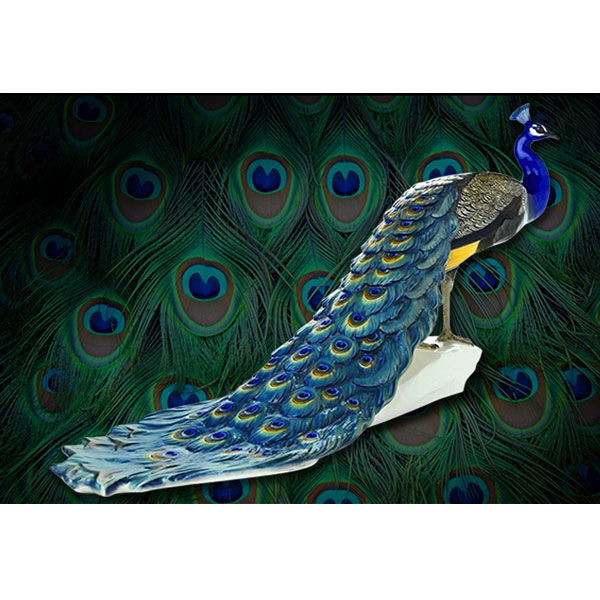
Nymphenburg Peacock
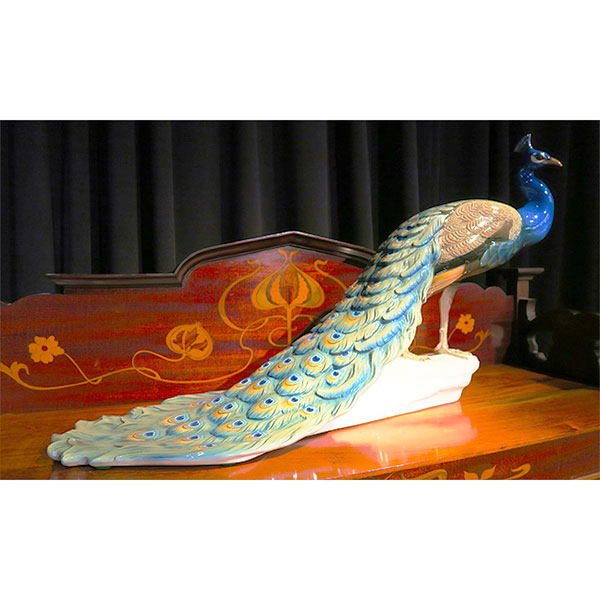
Nymphenburg Peacock on Liberty Style Cabinet
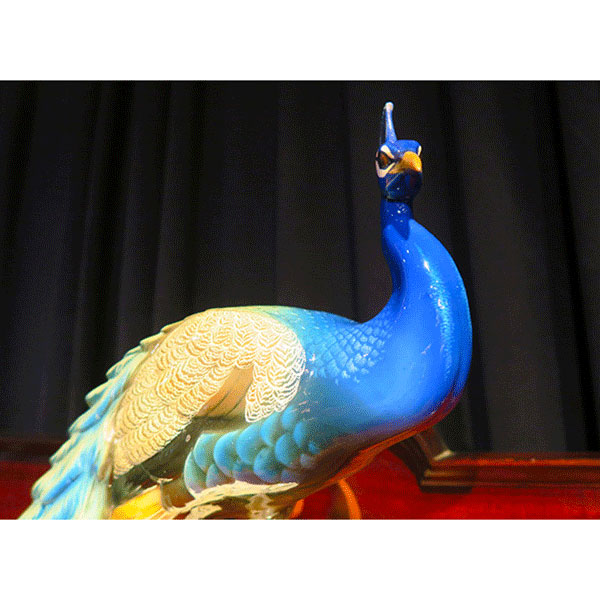
Nymphenburg Peacock Detail
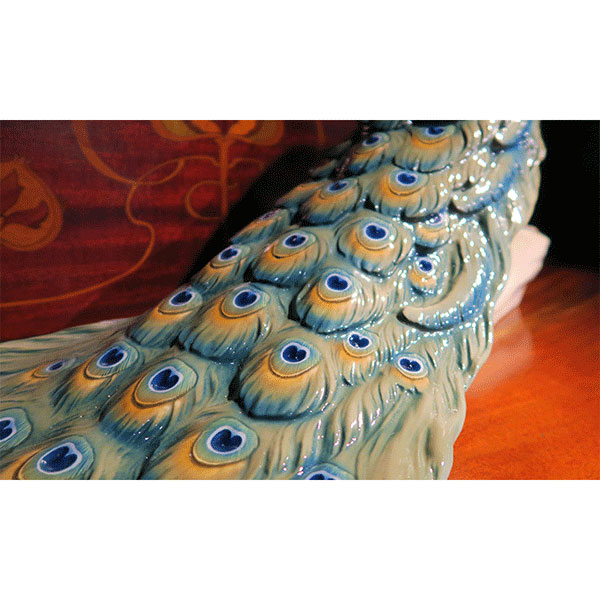
Nymphenburg Peacock Detail
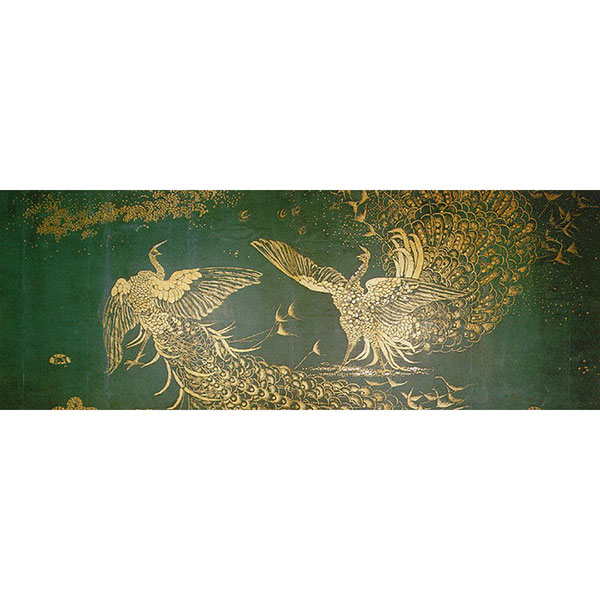
Detail of Whistler’s fighting Peacocks
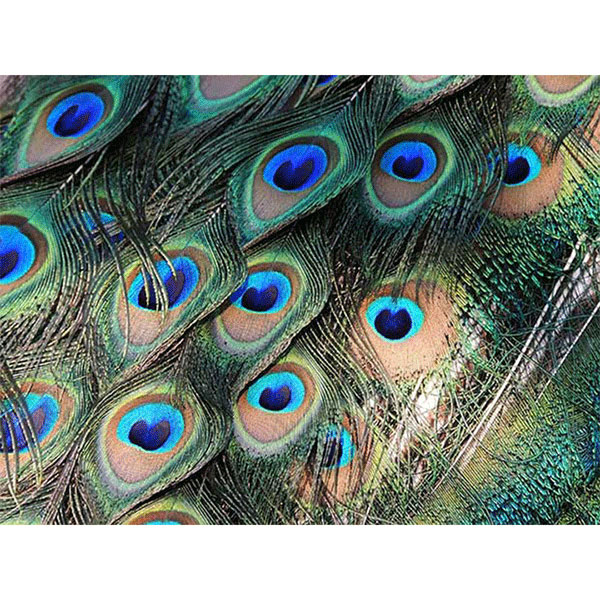
Peacock Feathers
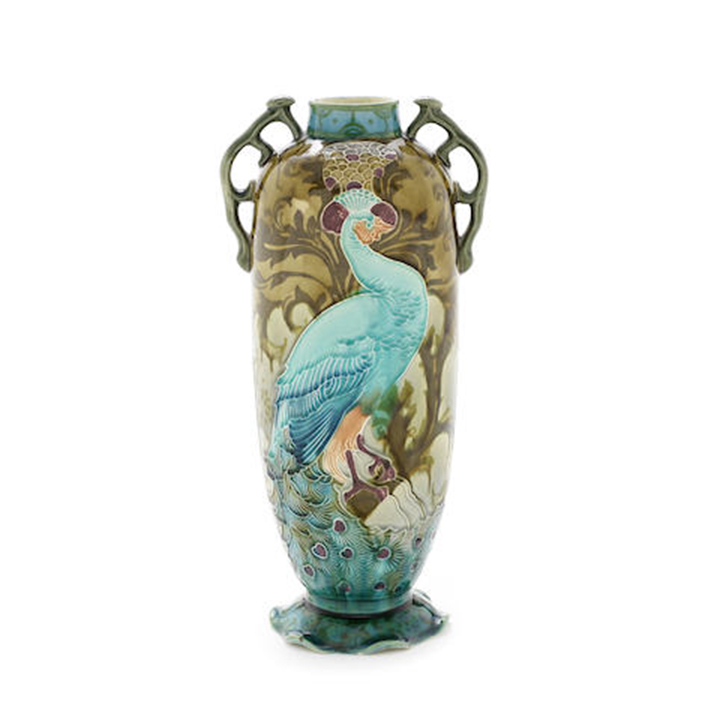
Minton Secessionist Peacock Vase
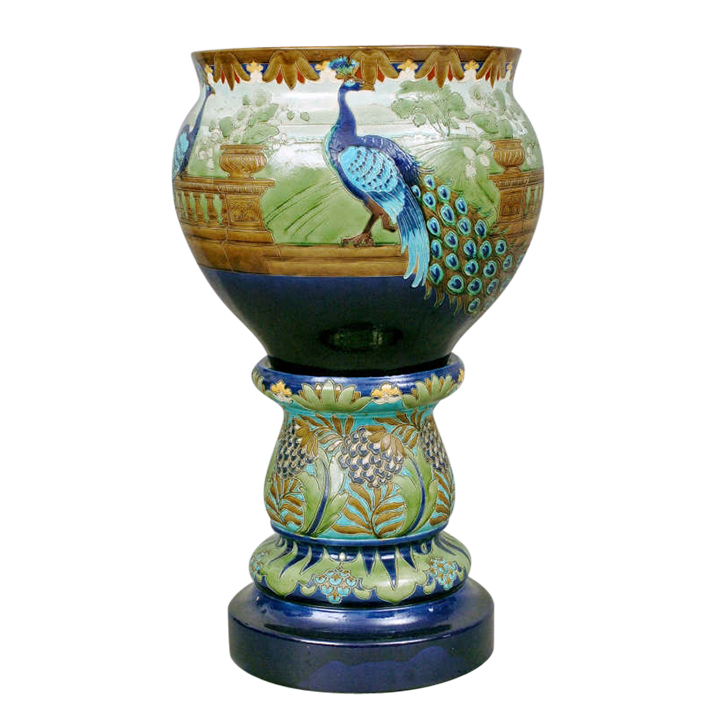
Burmantofts Peacock Garden Jardiniere
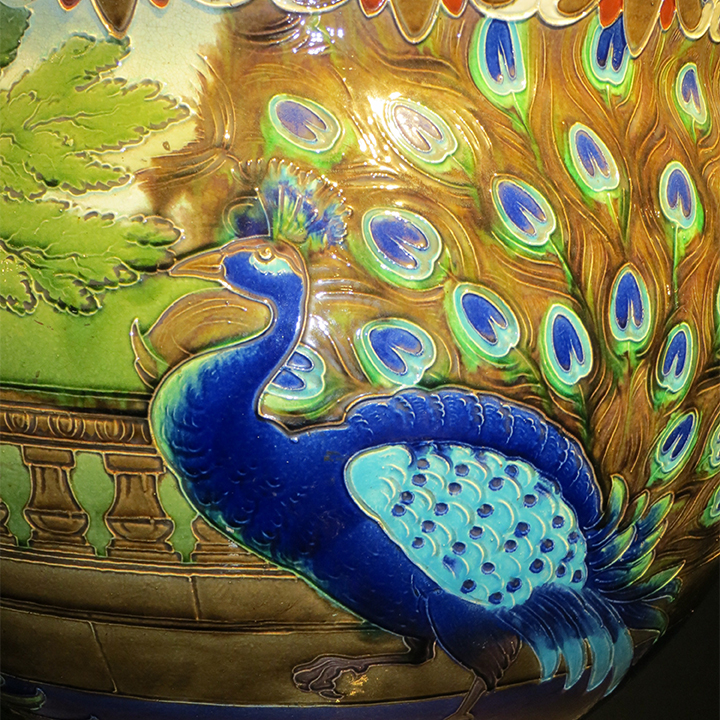
Burmantofts Peacock Detail
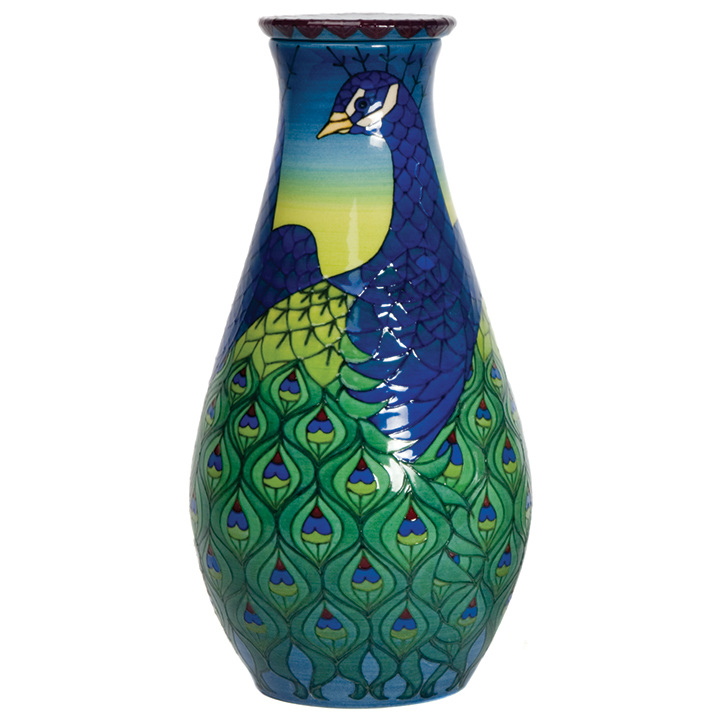
Dennis Chinaworks Peacock Vase
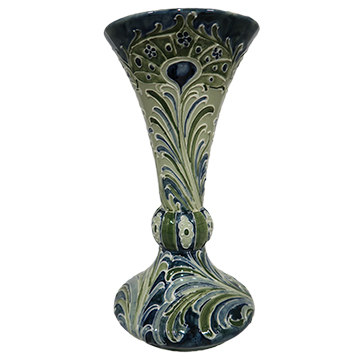
Moorcroft Florian Peacock Vase
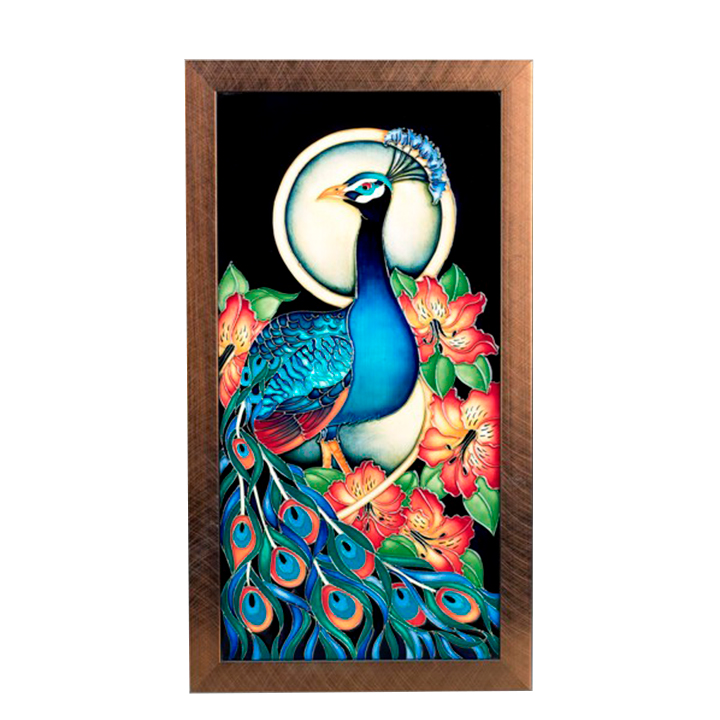
Moorcroft Millyford Tile Panel
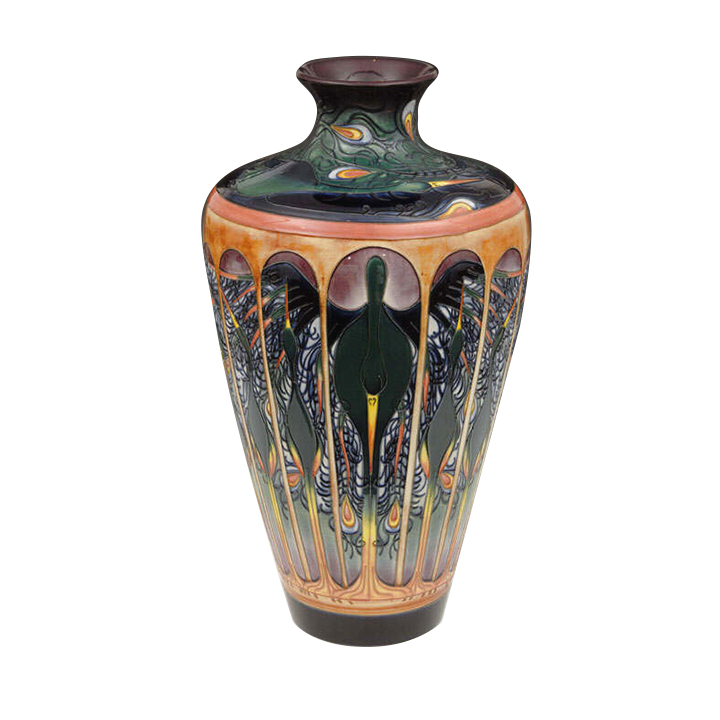
Moorcroft Gatekeepers Vase
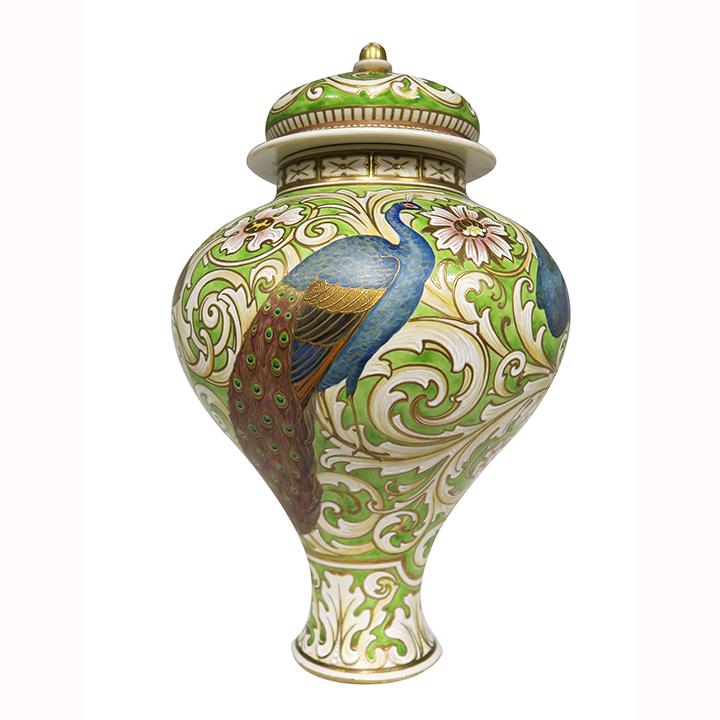
Doulton Carrara Ware Vase
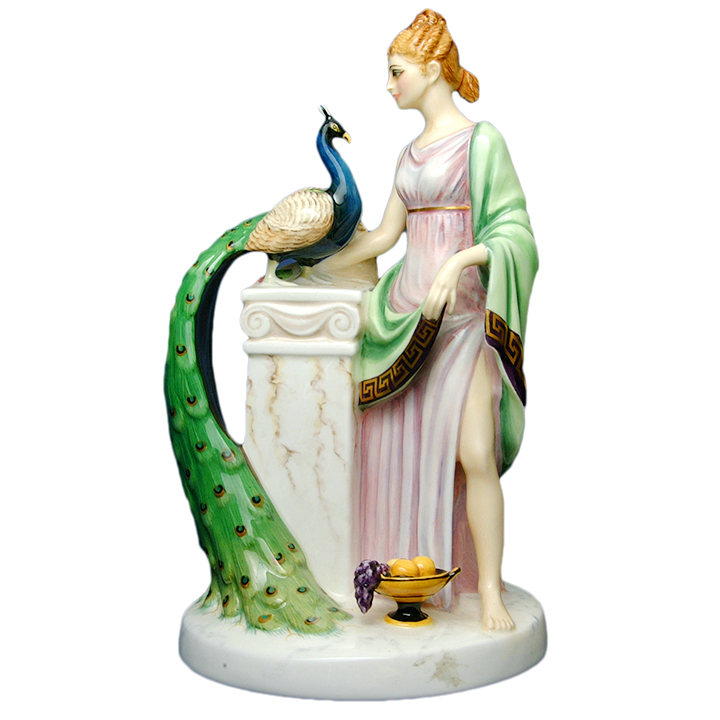
Royal Doulton Juno and the Peacock
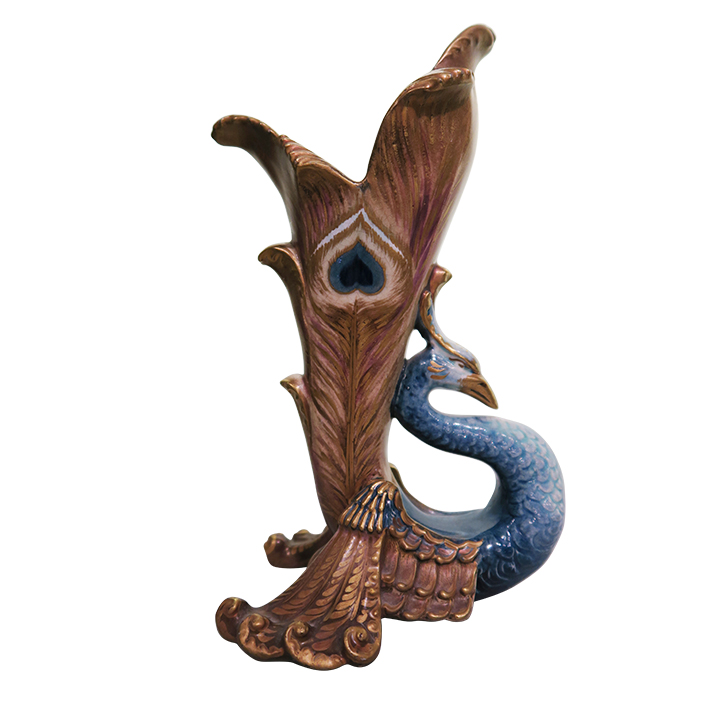
Doulton Crown Lambeth Peacock Ornament
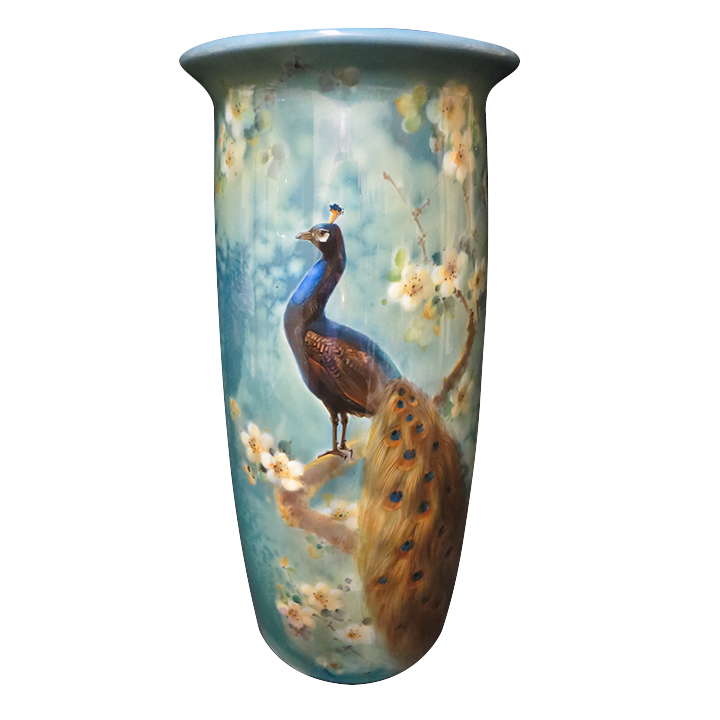
Royal Doulton Titanian Peacock Vase
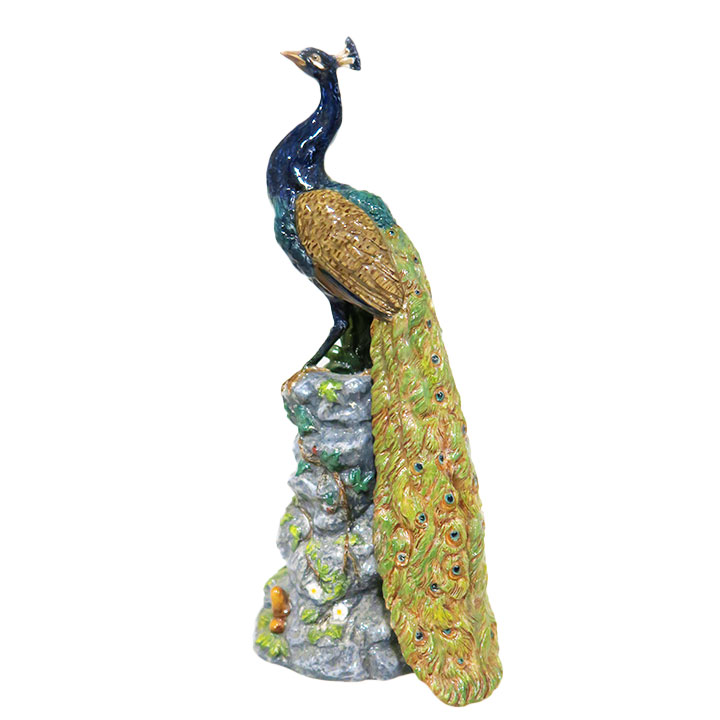
Minton Majolica Peacock Ornament
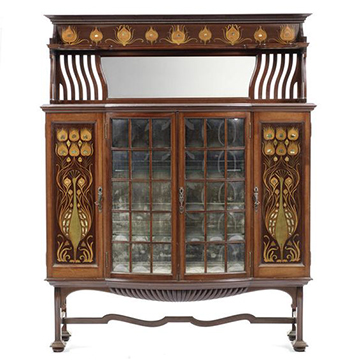
Shapland and Petter Cabinet with Inlaid Peacocks
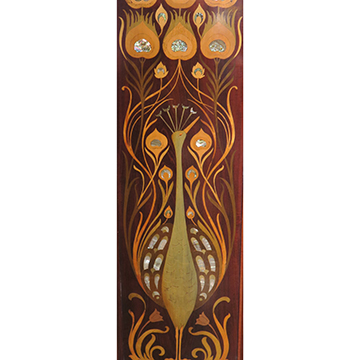
Shapland and Petter Cabinet Detail
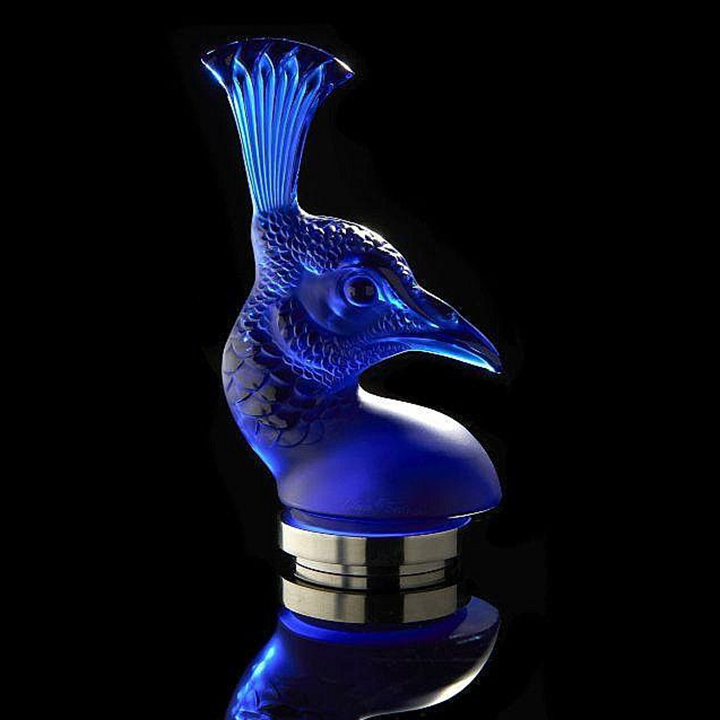
Lalique Peacock Car Hood Ornament
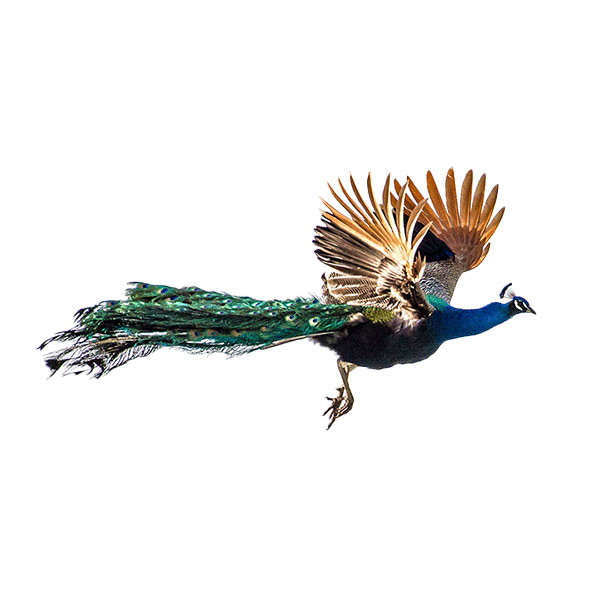
Flying peacock
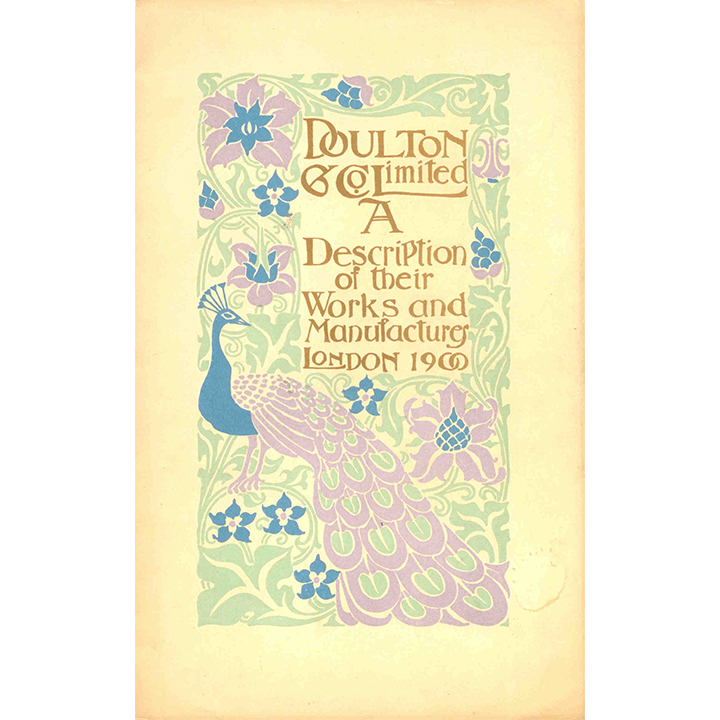
Royal Doulton Paris Exhibition Cover
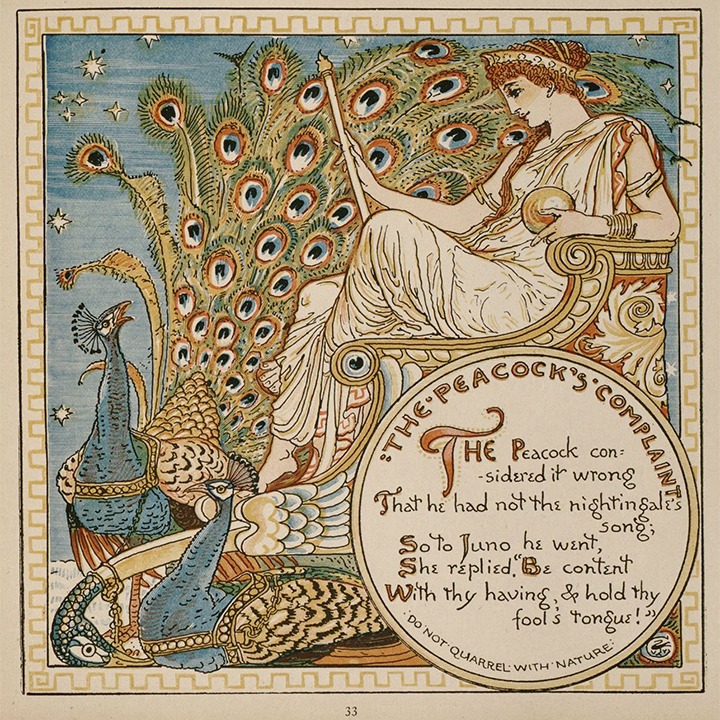
The Peacock’s Complaint Walter Crane
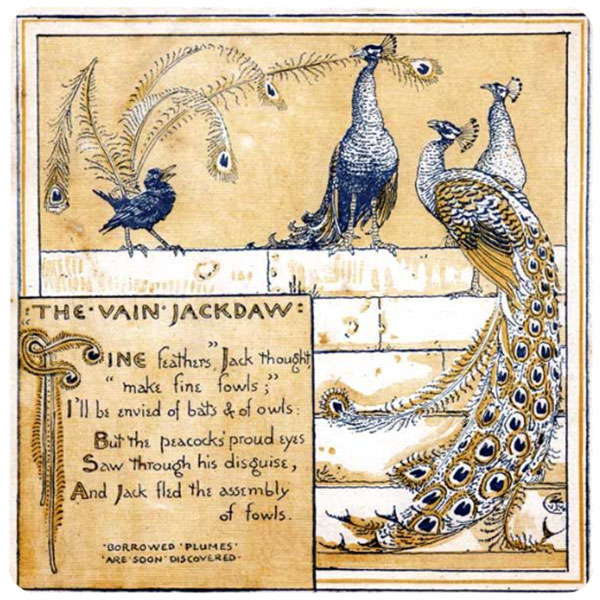
The Vain Jackdaw Walter Crane
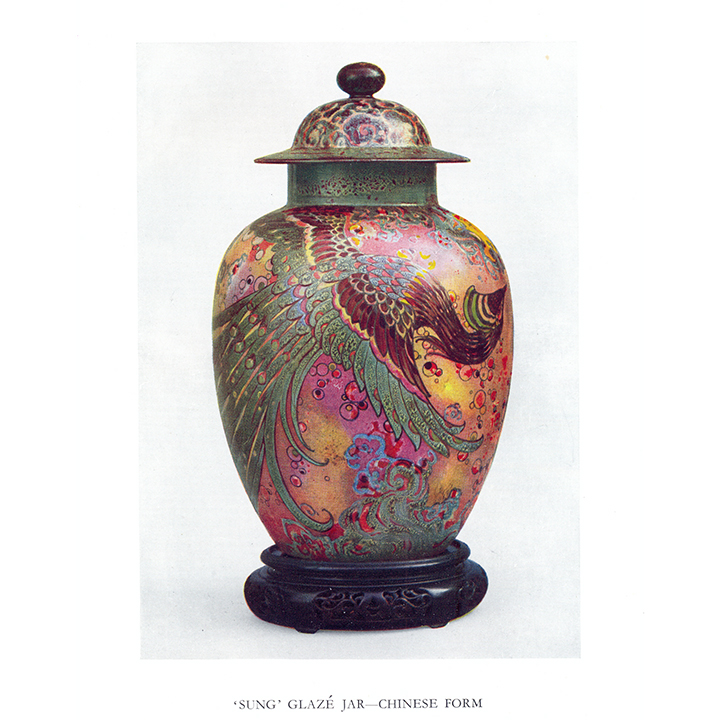
Royal Doulton Sung Peacock Ginger Jar Advert
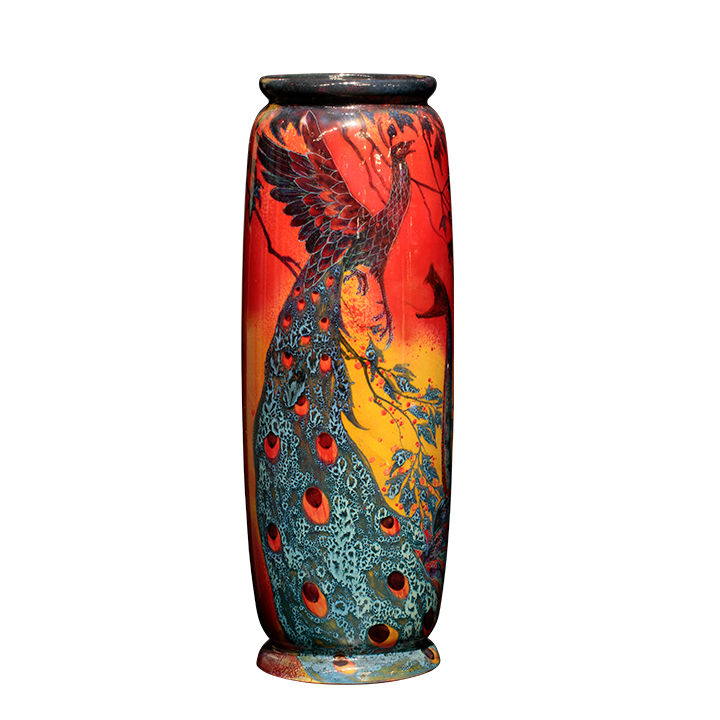
Royal Doulton Sung Peacock Vase
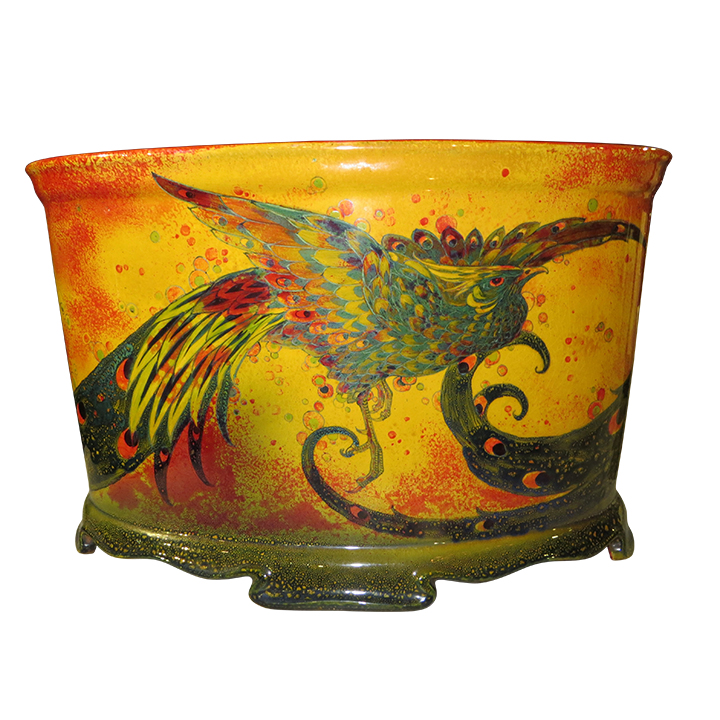
Royal Doulton Sung Basin
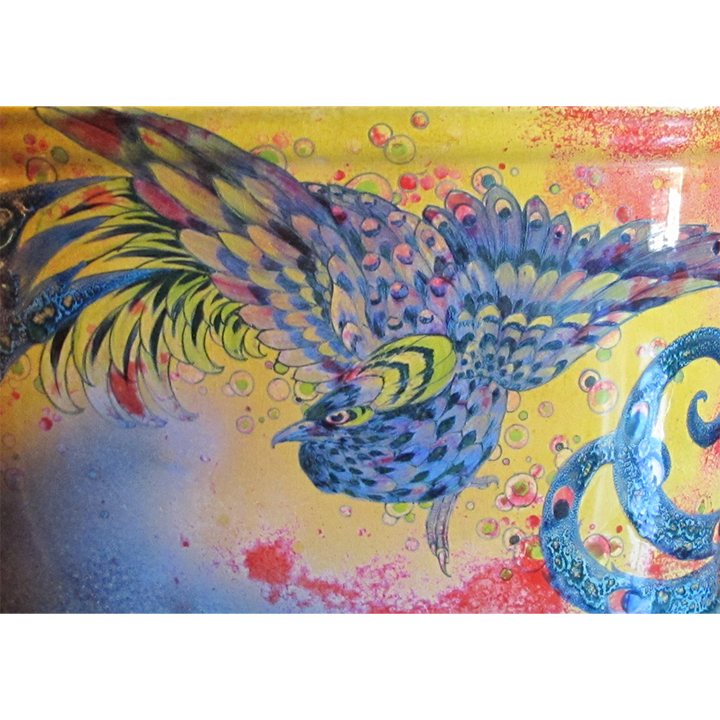
Royal Doulton Sung Peacock Detail
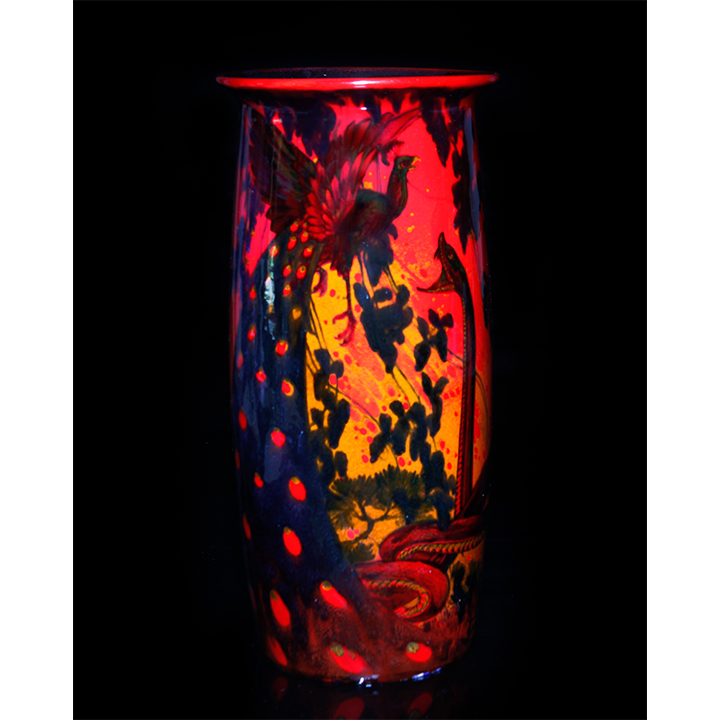
Royal Doulton Sung Peacock Vase
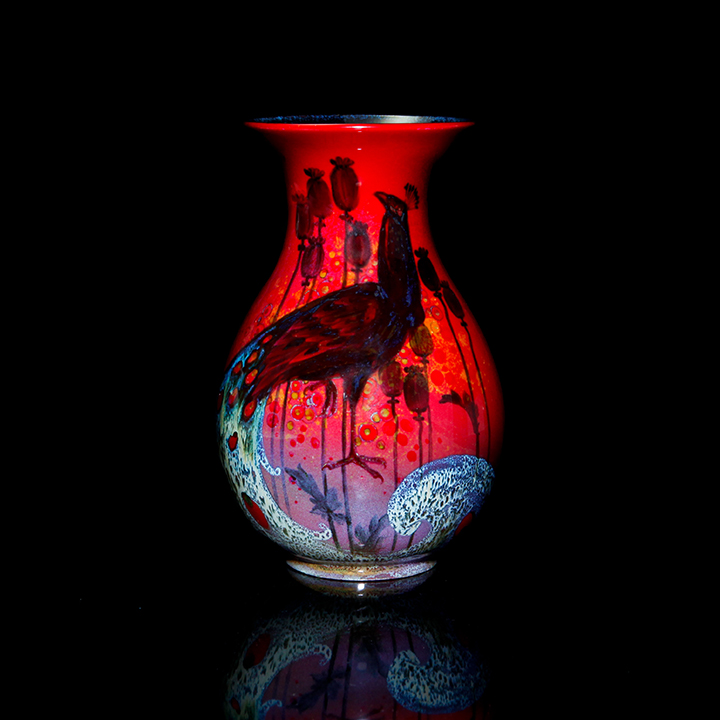
Royal Doulton Sung Peacock Vase
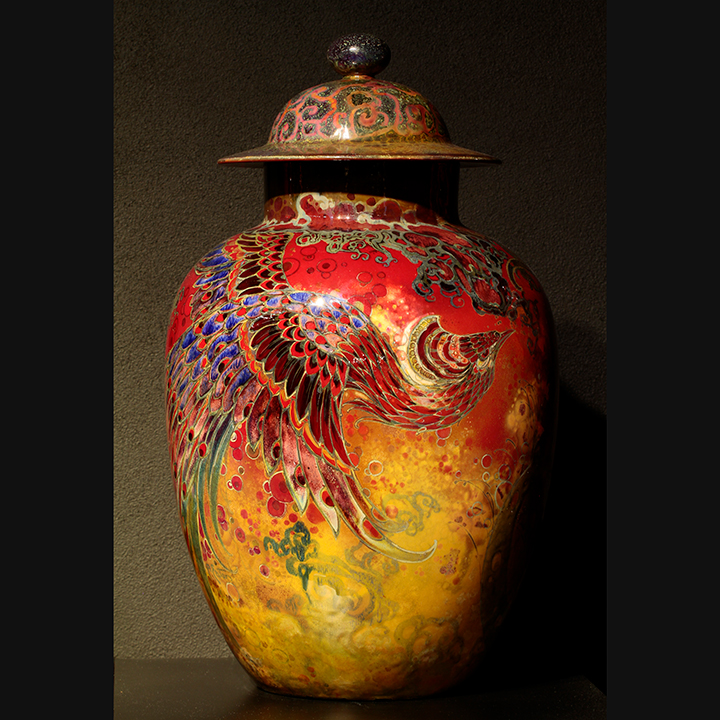
Royal Doulton Sung Peacock Vase
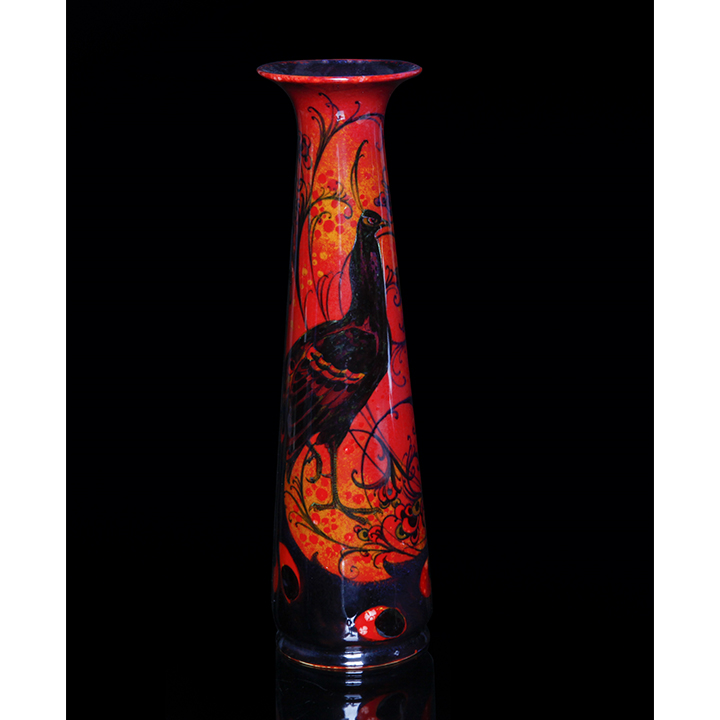
Royal Doulton Sung Peacock Vase
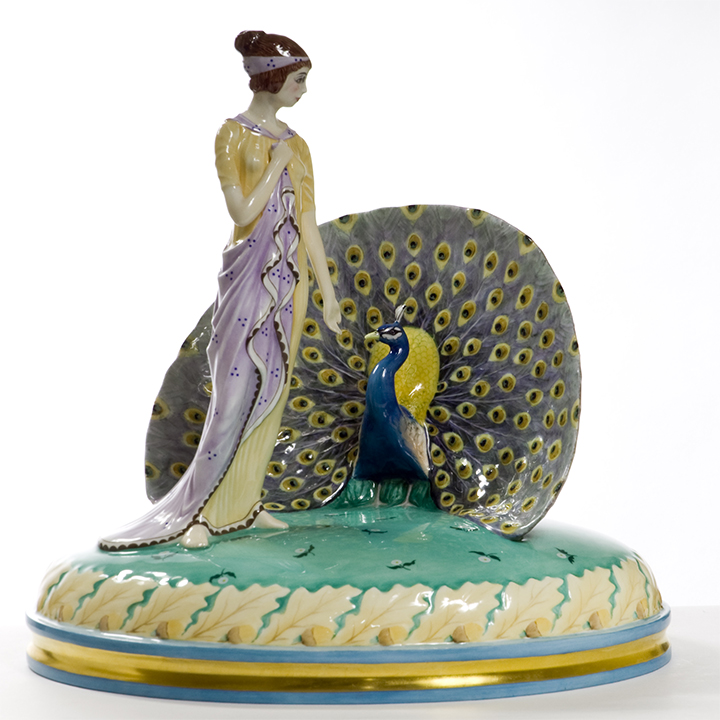
Royal Doulton Juno and the Peacock
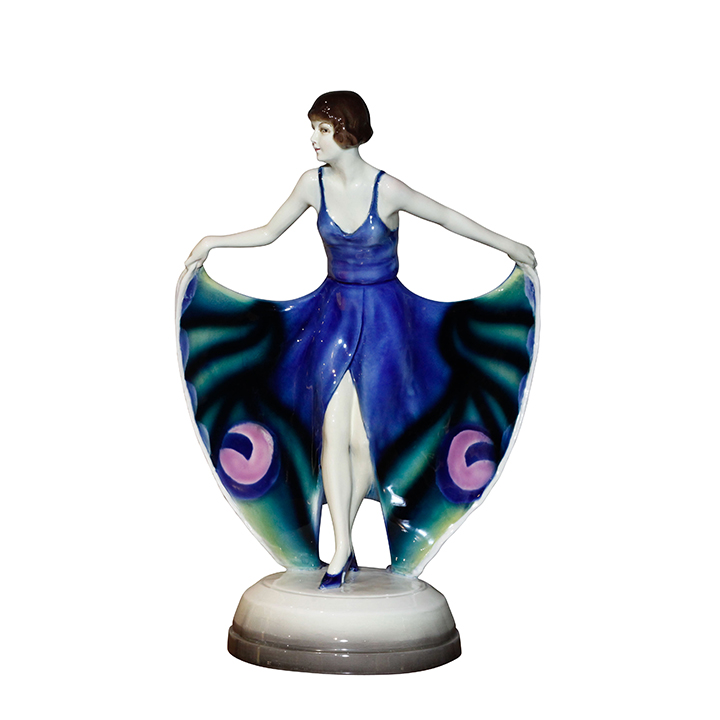
Goldscheider Dancer
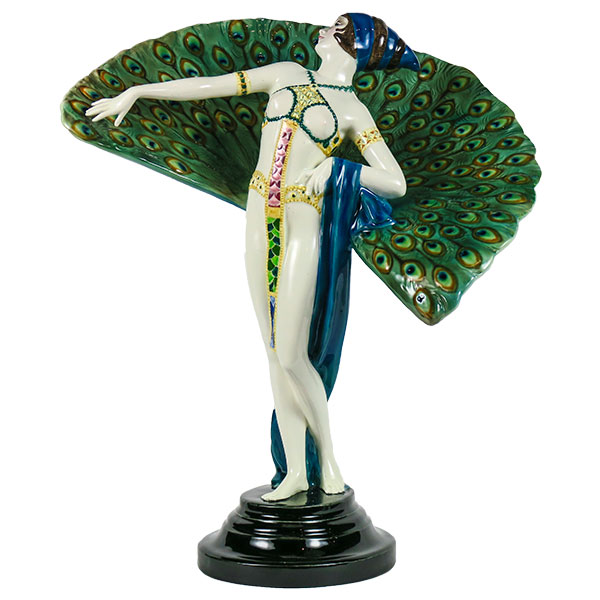
Goldscheider Dancer
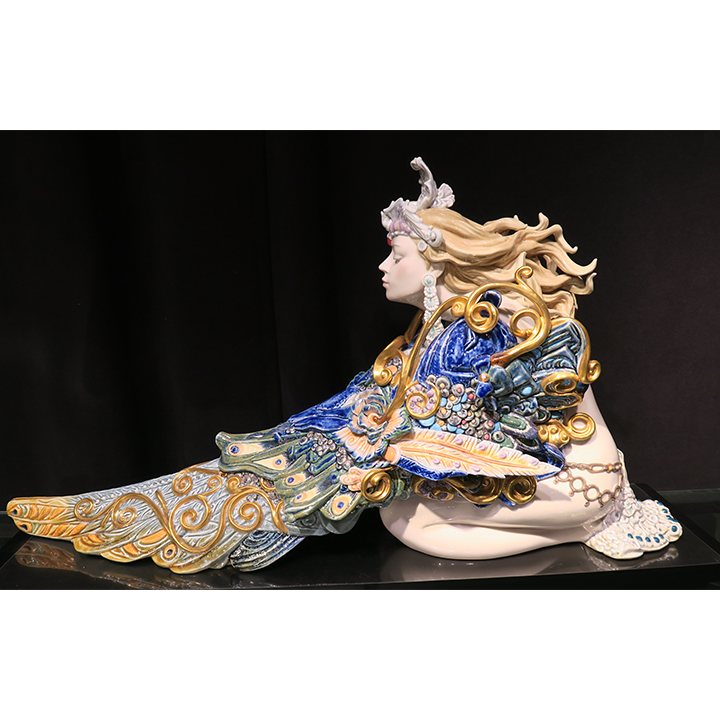
Lladro Winged Beauty
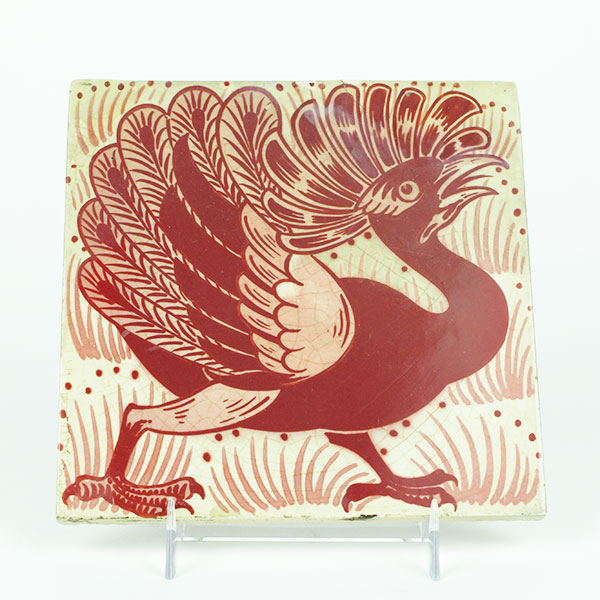
William de Morgan Peacock Tile
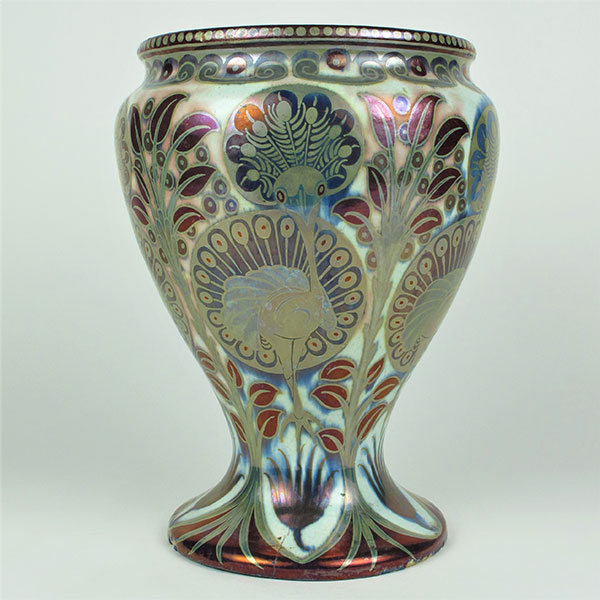
William de Morgan Peacock Vase
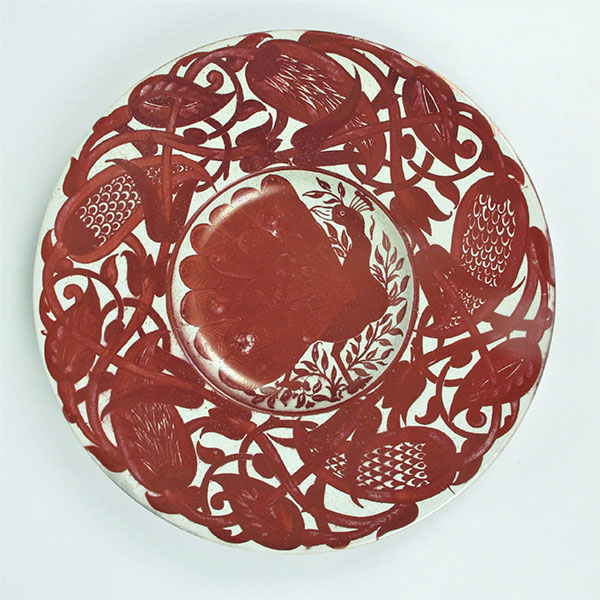
William de Morgan Peacock Charger
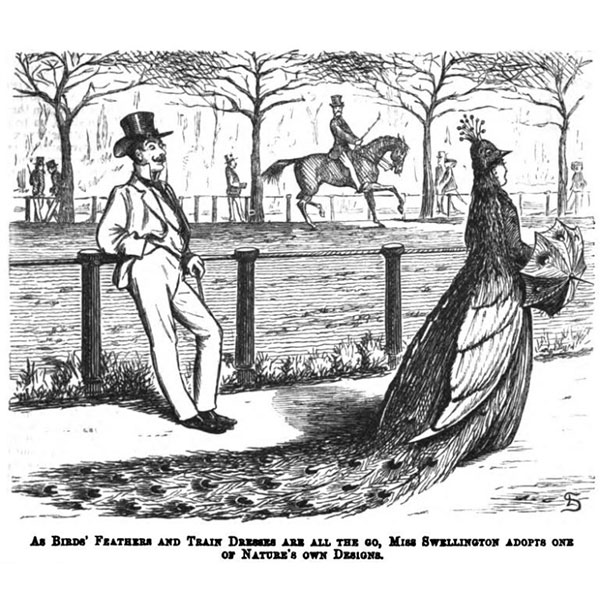
Punch Peacock Dress Cartoon
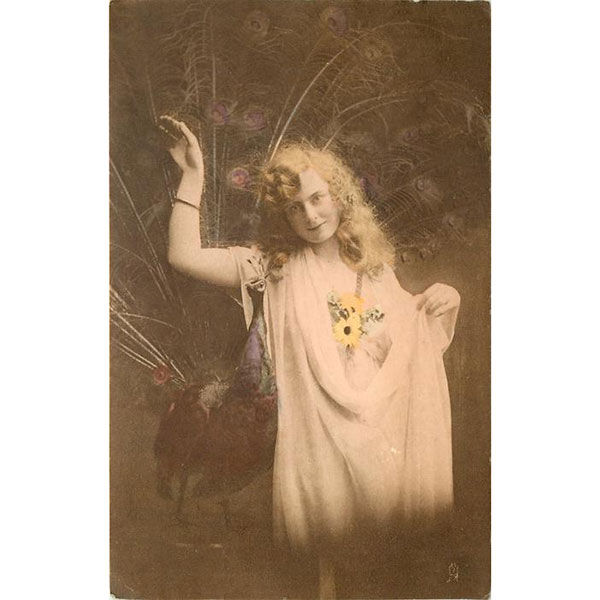
Raphael Tuck Postcard Peacock Feathers
